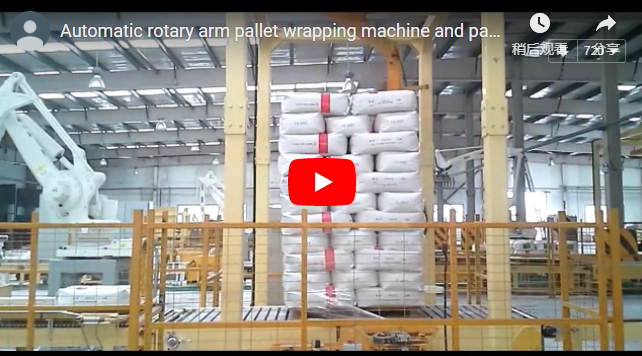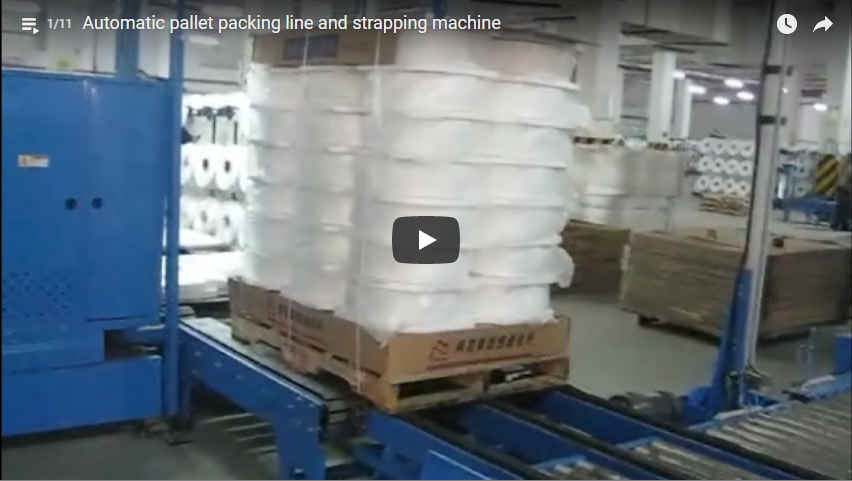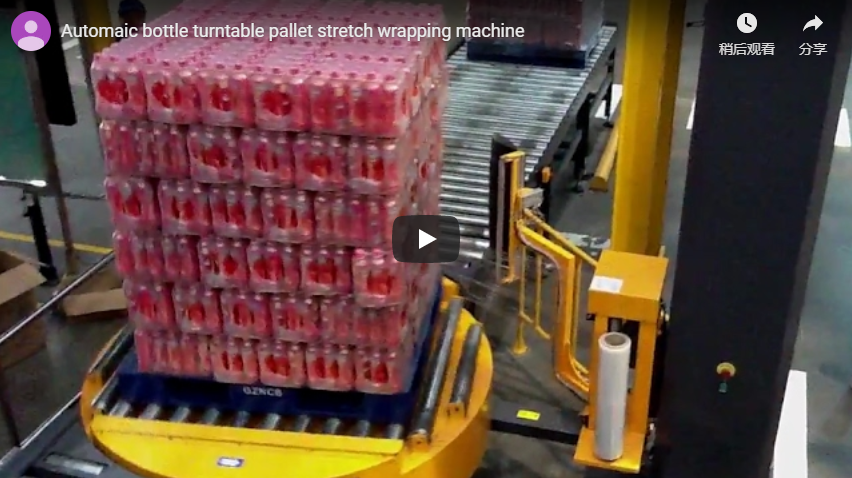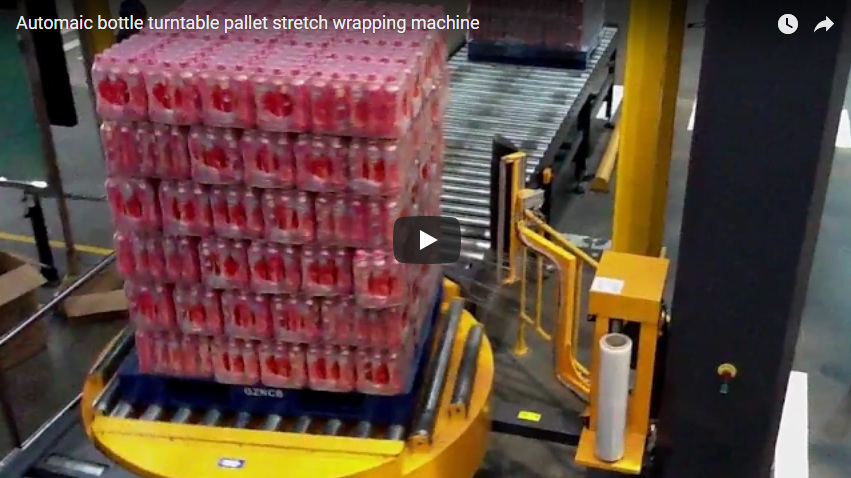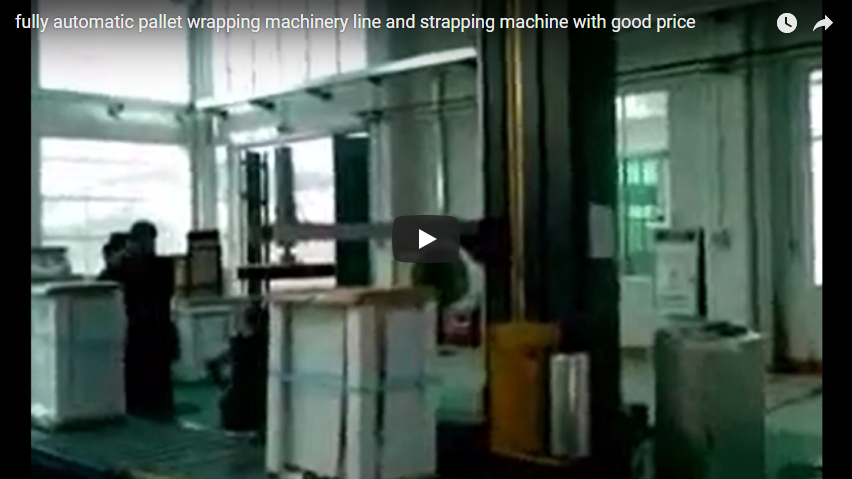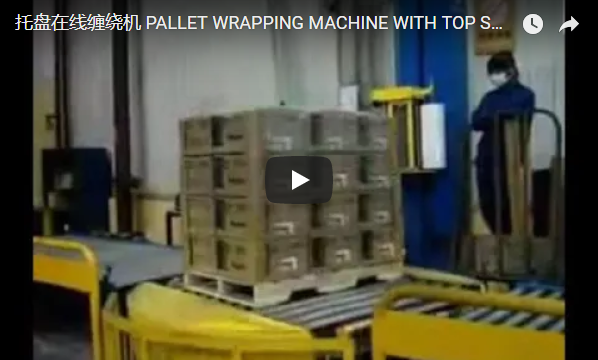Understanding the Rotary Arm Pallet Wrapper with Top Film Dispenser: Features, Benefits, and Applications
1. Introduction: Enhancing Load Security and Protection
In modern logistics and manufacturing, ensuring palletized goods arrive securely and protected from environmental factors is paramount. The Rotary Arm Pallet Wrapper equipped with a Top Film Dispenser (also known as a top sheet dispenser) represents a significant advancement in automated end-of-line packaging technology. Unlike traditional turntable wrappers where the pallet spins, a rotary arm wrapper keeps the pallet stationary while the film delivery system orbits around it. This design is particularly advantageous for wrapping loads that are exceptionally heavy, unstable, or have irregular shapes, minimizing the risk of product shifting or damage during the wrapping cycle.
The addition of an integrated top film dispenser addresses the need for complete environmental protection. Before or during the stretch wrapping cycle, this mechanism applies a separate layer of film across the top of the pallet load. This top sheet acts as a crucial barrier against dust, dirt, moisture, and potential tampering during storage and transit, providing true five-sided protection. This guide delves into the operational principles, technical specifications, and practical applications of this versatile packaging solution.
2. How It Works: The Wrapping Process Explained
Understanding the operational sequence helps appreciate the machine's efficiency:
- Pallet Positioning: The palletized load is typically conveyed into the wrapping zone and stops at a predetermined position. The stationary nature prevents destabilization.
- Top Sheet Application (Optional Sequence): Depending on the machine's configuration, the top film dispenser extends over the pallet and lays a sheet of film across the top surface. This film is usually held in place temporarily until the main wrap secures it. Some systems apply the top sheet mid-cycle.
- Rotary Arm Rotation: The rotary arm, equipped with the stretch film carriage, begins to rotate around the stationary pallet.
- Film Application & Pre-stretch: As the arm rotates, the film carriage dispenses stretch film. Modern systems incorporate a motorized pre-stretch mechanism, elongating the film (often by 200-300%) before application. This maximizes film yield, reduces material costs, and provides superior load containment force.
- Vertical Movement: Simultaneously with rotation, the film carriage moves vertically along the arm's mast to ensure consistent overlap and full coverage from the base to the top of the load. Wrap parameters (number of top/bottom wraps, overlap percentage, tension) are typically programmable via a control interface.
- Film Clamping, Cutting, and Sealing: Upon cycle completion, an automated system clamps the film tail, cuts it cleanly, and often uses a heat or wipe mechanism to seal it against the load, preventing unraveling.
- Pallet Discharge: The fully wrapped and protected pallet is then conveyed out of the wrapping zone, ready for shipment or storage.

3. Key Technical Specifications and Features
While specific configurations vary, rotary arm wrappers with top film dispensers commonly feature the following technical attributes.
- Machine Type: Rotary Arm Stretch Wrapper with Integrated Top Film Dispenser
- Load Handling: Stationary pallet during wrapping cycle
- Typical Pallet Size Compatibility: Commonly handles standard pallets (e.g., up to 1400mm x 1400mm or 55" x 55"), with variations available.
- Maximum Load Height: Often ranges from 2000mm to 3000mm (approx. 78" to 118"), accommodating tall loads.
- Film Delivery System: Powered pre-stretch system (e.g., capable of 150% to 300% stretch ratios) is standard for efficiency and load integrity.
- Rotational Speed: Arm speeds typically range from 15 to 30 RPM, influencing throughput capacity (pallets per hour).
- Top Film Dispenser: Integrated system to apply top sheets automatically.
- Control System: PLC-based controls with Human-Machine Interface (HMI), often a touchscreen, allowing programmable wrap recipes, diagnostics, and adjustments (e.g., film tension, arm speed, carriage speed, top/bottom wrap counts).
- Power Requirements: Commonly 480V/3Ph/60Hz (North America) or 380-415V/3Ph/50Hz (Europe/Asia), but specifics depend on configuration and region.
- Safety Features: Essential components include safety fencing, light curtains at entry/exit points, emergency stop buttons, anti-fall devices for the film carriage, and audible/visual alarms.
- Automation Integration: Designed for integration into automated packaging lines using conveyors and upstream/downstream communication protocols.
- Film Management: Features like automatic film clamping, cutting, and sealing/wiping systems enhance automation and reduce manual intervention.
Disclaimer: The parameters listed above are representative examples. Actual machine specifications can vary based on the manufacturer, model, and customization options. For precise technical data matching a specific machine or application requirement, direct consultation with the equipment supplier is necessary.
4. Industry Applications & Experience Sharing
The combination of stable wrapping and top protection makes this machinery invaluable across various sectors:
- Food and Beverage: In industries requiring strict hygiene, the top sheet prevents contamination of primary packaging (e.g., bags of flour, shrink-wrapped trays, bottled beverages) from warehouse dust or moisture during transport. Stable wrapping is also key for palletized containers that might be prone to shifting.
- Electronics and Appliances: Sensitive electronic goods and appliances benefit significantly from the dust and moisture barrier provided by the top film. The secure wrap minimizes vibration damage and prevents cosmetic defects like scratches during handling.
- Chemicals and Pharmaceuticals: For palletized drums, sacks, or containers of chemicals or pharmaceuticals, the top sheet adds a layer of containment security, reducing risks of spills or exposure. It also aids in maintaining product integrity and complying with handling regulations.
- Building Materials: Products like bagged cement, tiles, or bricks often stored outdoors or in potentially damp environments benefit greatly from the top film's weather protection. The robust wrap secures these heavy and sometimes unstable loads.
- General Manufacturing & Distribution: Any operation needing reliable, high-throughput pallet wrapping with enhanced product protection and load stabilization can leverage this technology to reduce shipping damage, improve load appearance, and optimize packaging material usage through pre-stretch.
5. Operational Considerations & Best Practices
- Film Selection: Choose a high-quality stretch film compatible with the pre-stretch system. Film gauge (thickness), width, and properties (e.g., puncture resistance, cling) should match the load type and wrapping requirements.
- Tension Settings: Adjust film tension carefully. Too little tension results in poor load containment, while too much can crush fragile products. Optimize settings based on load stability and product sensitivity. Utilize different tension settings for different parts of the wrap cycle if the controller allows.
- Maintenance: Regular maintenance is crucial for optimal performance and longevity. This includes inspecting rollers, belts, sensors, the cutting/sealing mechanism, and lubricating moving parts according to the manufacturer's schedule. Keeping the pre-stretch rollers clean ensures consistent film performance.
- Safety Compliance: Ensure all safety features are operational and that personnel are trained on safe operating procedures, including lockout/tagout for maintenance. Adhere to local safety regulations regarding machine guarding. For more on load security standards, resources like the Packaging Machinery Manufacturers Institute (PMMI) offer valuable insights.
6. Conclusion
The Rotary Arm Pallet Wrapper with Top Film Dispenser offers a robust and efficient solution for businesses seeking superior load stabilization and comprehensive protection against environmental elements and transit hazards. Its ability to handle diverse load types, particularly heavy or unstable ones, combined with the cost savings from film pre-stretch and the added security of a top sheet, makes it a strategic investment for optimizing end-of-line packaging operations across numerous industries. By understanding its capabilities and implementing best practices, companies can significantly reduce product damage, enhance operational efficiency, and ensure their goods reach their destination in optimal condition.

